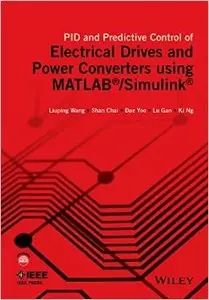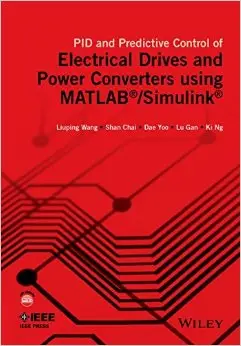Liuping Wang and Shan Chai, "PID and Predictive Control of Electrical Drives and Power Converters Using MATLAB / Simulink"
English | ISBN: 1118339444 | 2015 | 368 pages | PDF | 13 MB
English | ISBN: 1118339444 | 2015 | 368 pages | PDF | 13 MB
A timely introduction to current research on PID andpredictive control by one of the leading authors on thesubject
PID and Predictive Control of Electric Drives and PowerSupplies using MATLAB/Simulink examines the classical controlsystem strategies, such as PID control, feed–forward control andcascade control, which are widely used in current practice. The authors share their experiences in actual design andimplementation of the control systems on laboratory test–beds,taking the reader from the fundamentals through to moresophisticated design and analysis. The bookcontains sections on closed–loop performance analysis in bothfrequency domain and time domain, presented to help the designer inselection of controller parameters and validation of the controlsystem. Continuous–time model predictive control systems aredesigned for the drives and power supplies, and operationalconstraints are imposed in the design. Discrete–time model predictive control systems are designed basedon the discretization of the physical models, which will appeal toreaders who are more familiar with sampled–data control system.Soft sensors and observers will be discussed for low costimplementation. Resonant control of the electric drives andpower supply will be discussed to deal with the problems of bias insensors and unbalanced three phase AC currents.
Brings together both classical control systems and predictivecontrol systems in a logical style from introductory through toadvanced levels
Demonstrates how simulation and experimental results are usedto support theoretical analysis and the proposed designalgorithms
MATLAB and Simulink tutorials are given in each chapter to showthe readers how to take the theory to applications.
Includes MATLAB and Simulink software using xPC Target forteaching purposes
A companion website is available
Researchers and industrial engineers; and graduate students onelectrical engineering courses will find this a valuableresource.



